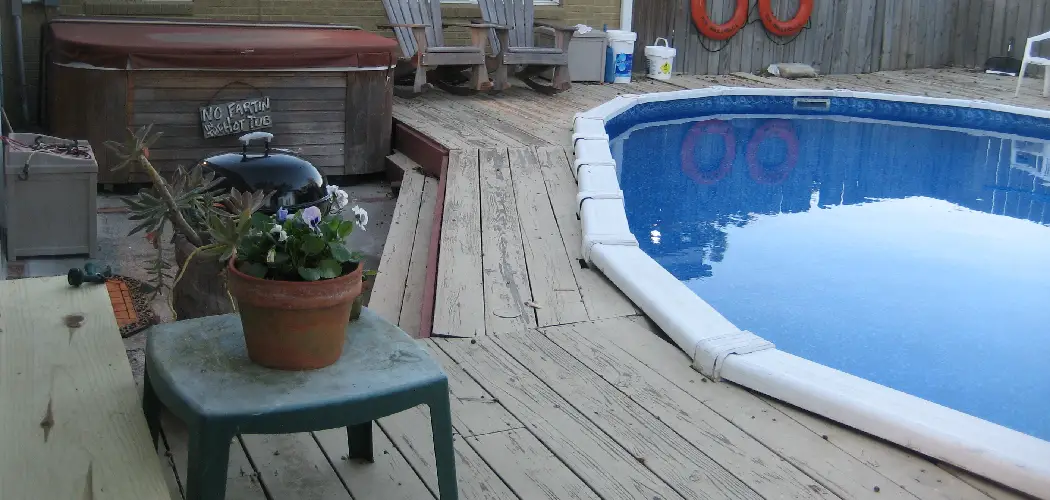Are you looking to install a hot tub on your deck but worried about potentially dangerous weight shifts and structural damage? You’re not alone! Many homeowners who want to add a deck-adjacent hot tub worry about the stress the water and visitors will put on their decks.
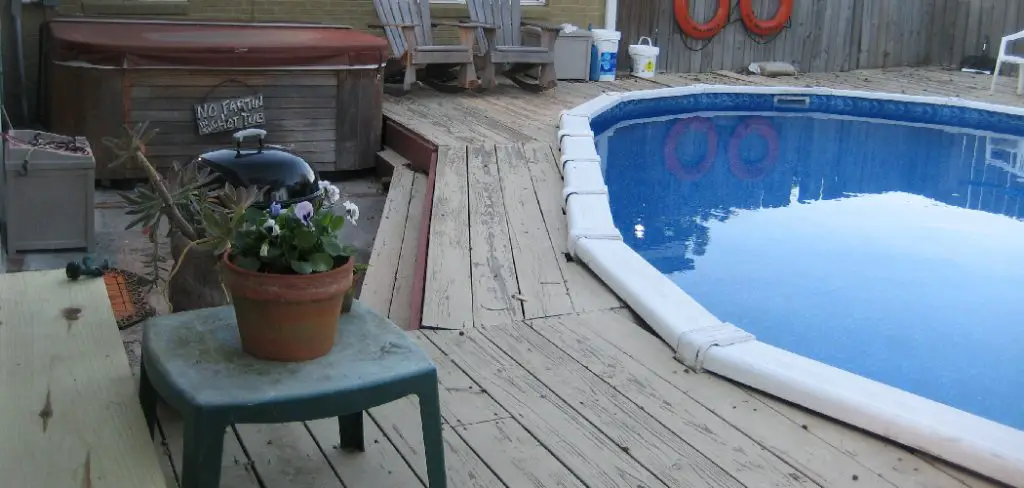
But fear not – with proper planning, reinforcement, and caution, you can safely add a hot tub to your outdoor space without compromising safety or peace of mind. In this article, we’ll explore how to reinforce deck for hot tub as well as some other tips so that both you and your guests have an enjoyable experience. Read on to learn more!
Do I Need to Reinforce My Deck for a Hot Tub?
When installing a hot tub in your backyard, you must consider the deck’s structural integrity and reinforcement requirements. Hot tubs can be heavy and add strain to the deck structure. It is important to ensure your existing deck meets or exceeds the weight capacity required for a hot tub before proceeding with the installation.
If your deck was built prior to the installation of a hot tub, you may need to reinforce it if it does not meet or exceed the weight capacity. It is important to ensure that adequate supports and reinforcements are installed prior to placing a hot tub on your deck.
In order for your existing deck to support a hot tub, you’ll likely need to add additional joists or beams to the existing framing. It is also a good idea to add additional blocking and posts beneath the deck joists.
These reinforcements are necessary in order to ensure that your deck has adequate support for a hot tub. If you feel like your existing deck may not be up to the task, you should get an inspection by a certified deck builder or structural engineer. This will make sure that any reinforcements you may need are properly designed and installed.
10 Methods How to Reinforce Deck for Hot Tub
1. Add Support Posts
Adding support posts is one of the most effective ways to reinforce a deck for a hot tub. The posts should be placed at regular intervals around the perimeter of the deck, and they should be securely attached to the deck joists.
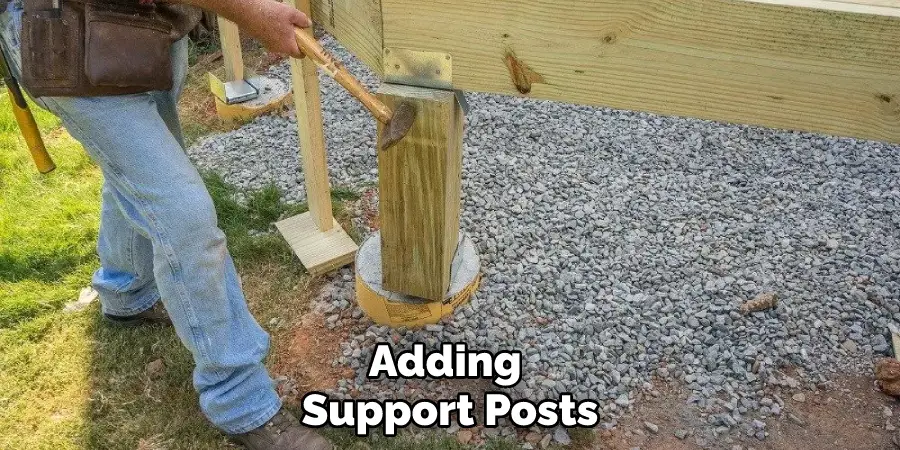
This will help provide extra strength and stability to the deck, allowing it to support the weight of the hot tub. If you’re not sure how to install the support posts, it’s best to consult a professional. Although it may cost a bit more money, having the job done properly will ensure your deck is safe and secure.
2. Use Stronger Lumber
If you are building a new deck or if you are planning to replace any of the existing lumber on your deck, you should use stronger lumber. Pressure-treated lumber is a good option, as it is designed to resist rot and insect damage. It should be used when framing your deck and when attaching the decking boards.
Redwood or cedar are good alternatives to pressure-treated lumber, as they are naturally resistant to rot and insects. If using redwood or cedar, be sure to seal the wood with a UV-blocking sealer to help protect it from the elements.
3. Reinforce the Joists
The joists are the horizontal beams that support the decking boards. If your deck has weak or damaged joists, it is important to reinforce them before adding a hot tub. One way to do this is to add additional joists alongside the existing ones. Another option is to install steel brackets that attach the joists to the beam.
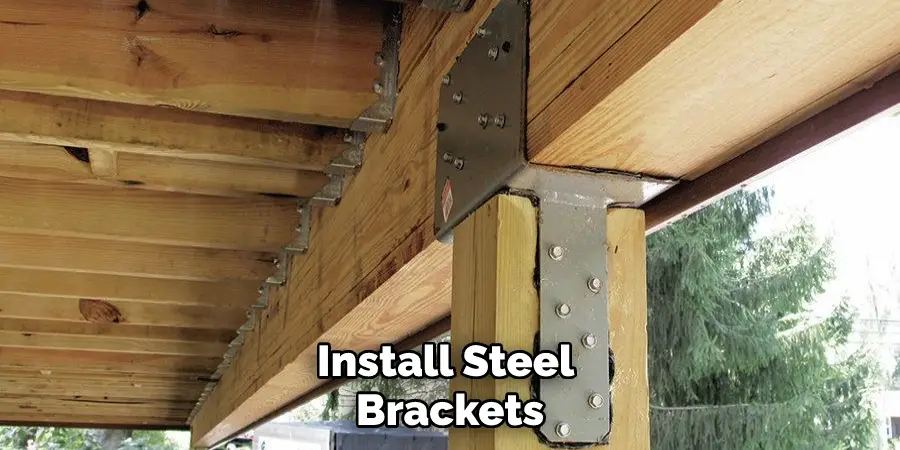
This will help to provide additional support and stability for the deck. You should also consider adding a layer of plywood, such as sheathing, to the joists before adding the deck boards. This will provide additional reinforcement and help to protect the joists from moisture damage. Once you have reinforced the joists, you are ready to start building the deck around your hot tub.
4. Install Diagonal Bracing
Diagonal bracing is another effective way to reinforce a deck for a hot tub. The bracing should be installed at regular intervals along the length of the joists. This will provide additional support against lateral loads caused by the weight of the hot tub and its contents.
If the deck is attached to a house, it’s best to attach the bracing at the same time as attaching the ledger board. This will help ensure that the bracing and ledger board are properly installed. If the deck is freestanding, it’s important to make sure the diagonal bracing is securely fastened to the frame of the deck.
5. Use Lag Bolts Instead of Nails
If you are attaching anything to your deck, such as railing or skirting, you should use lag bolts instead of nails. Lag bolts are much stronger than nails and will provide a more secure connection. Make sure to use the right size and length of lag bolt for the job.
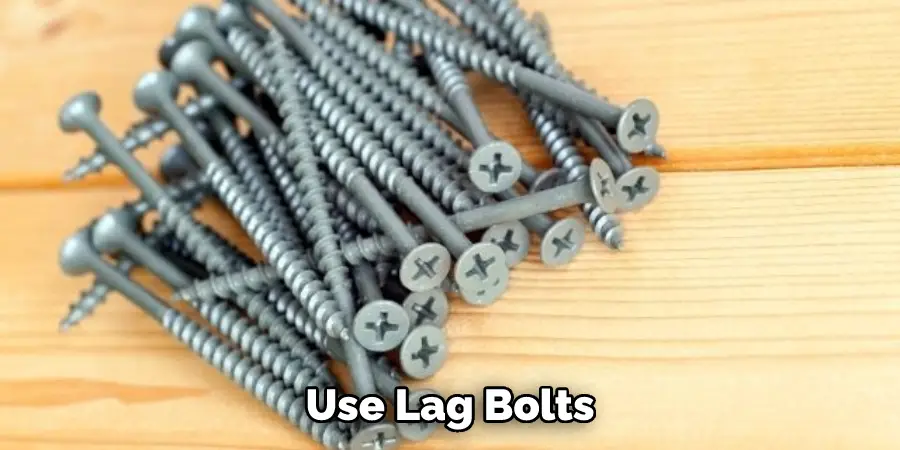
If you are not comfortable with using a drill, hire a professional to do the job for you. Although lag bolts are more expensive than nails, they will save you money in the long run because they are much stronger and less likely to fail.
6. Add Cross Bracing
Cross bracing is another effective way to reinforce a deck for a hot tub. The bracing should be installed at regular intervals along the length and width of the joists. The most common approach is to use 2×4 lumber cut into 45-degree angles and nail it into the joists, forming an “X” pattern. This will help to support the weight of the hot tub and provide additional stability.
It’s important to check with a professional engineer before installing any bracing to ensure it is properly sized and installed. Additionally, make sure the cross-bracing isn’t placed too close to the hot tub, as this can reduce the available space for installation.
7. Use Structural Screws
If you are attaching anything to your deck, such as railing or skirting, you should use structural screws instead of nails or lag bolts. Structural screws are specifically designed for attaching lumber and will provide a stronger connection than either nails or lag bolts.
You should also consider using stainless steel screws in order to prevent any corrosion due to the moisture of your hot tub. Make sure you use either decking screws or structural screws with a washer head to ensure the best connection.
8. Install Plywood Sheathing
If your deck has open spaces between the joists, you should install plywood sheathing over them before adding a hot tub. The sheathing will provide additional support and will help to prevent the hot tub from wobbling or shifting.
To install the sheathing, measure and cut plywood to fit the space between the joists. Attach the plywood to the joists using screws or nails, making sure to secure the sheathing firmly in place. Once the plywood sheathing is installed, you are ready to move on to the next step.
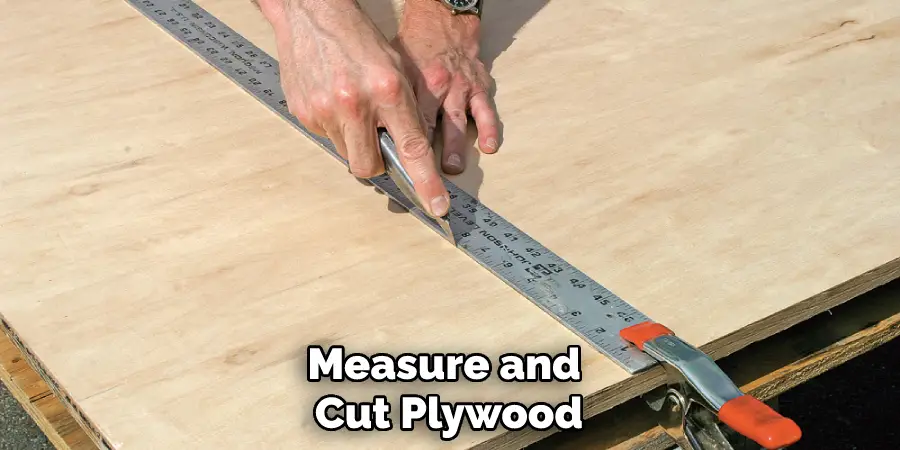
9. Use Hangers Instead of Nails
If you are attaching anything to your deck, such as railing or skirting, you should use hangers instead of nails or lag bolts. Hangers provide a stronger connection than either nails or lag bolts and will help to prevent the attached item from shifting or moving.
Using hangers also helps save time because they can be easily removed if necessary. Additionally, anger provides a more aesthetically pleasing look than nails or lag bolts. Make sure to use corrosion-resistant hangers that are designed to handle the weight of the deck and the hot tub.
10. Have Your Deck Professionally Inspected
Before adding a hot tub to your deck, it is always best to have it professionally inspected by a qualified contractor. They will be able to identify any areas that need reinforcement and can make recommendations on how best to proceed.
This can help to ensure the deck is safe and secure before you install your hot tub. Once the inspection is complete, move forward with reinforcing the deck according to the recommendations.
What Is the Best Deck Support for a Hot Tub?
When it comes to installing a hot tub on your deck, you need to make sure that the deck is properly reinforced and structurally sound. Depending on the size and weight of your hot tub, you may need to add additional support to ensure that your deck can handle the load.
One of the best ways to reinforce a deck for a hot tub is by adding extra beams or joists underneath the decking boards. The extra joists should run perpendicular to the existing boards and be spaced at least 12 inches apart. This will provide additional support to the deck boards and help distribute the weight of the hot tub more evenly.
Additionally, you can also add extra posts underneath the deck for added support. Posts should be placed no more than 10 feet apart and evenly distributed around the perimeter of the deck where your hot tub will be placed. Posts should also be firmly secured in concrete footings to ensure that they don’t move or shift over time.
Finally, it’s important to check with a professional contractor to make sure that your deck is up to code and can handle the additional weight of the hot tub. They will be able to tell you if any additional reinforcement is necessary and can provide you with the best advice for how to safely install your hot tub on your deck.

Conclusion
After taking the necessary precautions and necessities of reinforcement, you are ready to install your hot tub and party on. Once again, the steps for reinforcing a deck around the hot tub include adding additional support below the deck, checking for termite damage, test drilling into existing beam pockets or support posts, securing existing beams with bolts, replacing any deteriorated support posts, and lastly creating extra footings.
Following these steps will ensure that you create a secure area to reinstall your hot tub. Doing so not only gives you peace of mind while enjoying your time in the soothing bubbly warmth, but it also ensures that your visitors are safe while they’re visiting. You should now feel confident tackling this project – How to Reinforce Deck for Hot Tub!

